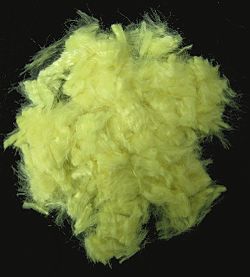Kevlar is a revolutionary synthetic fiber invented by Polish-American chemist Stephanie Kwolek at DuPont in 1965 that combines exceptional strength with heat resistance, making it five times stronger than steel by weight[1].
Origins and Development
Breakthrough Discovery Changes Materials Science
In 1964, Kwolek’s research at DuPont led to an unexpected discovery when she created a cloudy solution that, instead of being discarded, proved to be remarkably strong when spun into fibers[1]. This groundbreaking material would become modern Kevlar by 1971, transforming multiple industries from automotive to protective equipment[1].
Physical Properties
Molecular Structure Creates Extraordinary Strength
Kevlar’s impressive tensile strength of 3,620 MPa comes from its unique molecular structure. The fiber forms inter-molecular hydrogen bonds between carbonyl groups and NH centers, while aromatic stacking between strands provides additional reinforcement[1]. This molecular architecture creates sheet-like structures similar to silk protein[1].
Temperature Performance Defines Versatility
The material maintains peak performance from cryogenic temperatures (-196°C) up to moderate heat exposure. At 160°C, it retains 90% of its strength even after 500 hours of exposure[1].
Industrial Applications
Protection and Safety Lead Uses
Kevlar revolutionized personal protection through:
- Bulletproof vests and combat helmets
- Firefighter uniforms
- Cut-resistant gloves and clothing[1]
Transportation Innovation Drives Adoption
The automotive industry employs Kevlar in:
- High-performance car components
- Brake pad materials as an asbestos replacement
- Racing tire reinforcement[1]
Sports and Recreation
Athletic Equipment Benefits from Strength
Modern sports equipment utilizing Kevlar includes:
- Tennis and badminton rackets
- Bicycle tires and components
- High-performance sailing equipment[1]
Musical Applications
Sound Equipment Enhancement
Kevlar’s unique properties benefit musical applications through:
- Loudspeaker cones for superior acoustics
- Marching drum heads for increased durability
- String instrument bow construction[1]
Environmental Considerations
UV Protection Requirements
Kevlar’s primary limitation is its susceptibility to ultraviolet degradation, requiring protective coatings for outdoor applications[1]. This characteristic influences design considerations across all applications where sun exposure occurs.
Future Innovations
Technical Advancement Continues
Recent developments include:
- Smart textiles generating electricity through zinc oxide nanowire integration
- Enhanced composite materials for wind turbines
- Advanced protective gear with improved weight-to-strength ratios[1]
Citations:
https://en.wikipedia.org/wiki/Kevlar
Kevlar (para-aramid) is a strong, heat-resistant synthetic fiber, related to other aramids such as Nomex and Technora. Developed by Stephanie Kwolek at DuPont in 1965, the high-strength material was first used commercially in the early 1970s as a replacement for steel in racing tires. It is typically spun into ropes or fabric sheets that can be used as such, or as an ingredient in composite material components.

| |

| |
| Names | |
|---|---|
| IUPAC name
Poly(azanediyl-1,4-phenyleneazanediylterephthaloyl)
| |
| Identifiers | |
| ChemSpider |
|
| Properties | |
| [-CO-C6H4-CO-NH-C6H4-NH-]n | |
Except where otherwise noted, data are given for materials in their standard state (at 25 °C [77 °F], 100 kPa).
| |
Kevlar has many applications, ranging from bicycle tires and racing sails to bulletproof vests, all due to its high tensile strength-to-weight ratio; by this measure it is five times stronger than steel. It is also used to make modern marching drumheads that withstand high impact; and for mooring lines and other underwater applications.
A similar fiber called Twaron with the same chemical structure was developed by Akzo in the 1970s; commercial production started in 1986, and Twaron is manufactured by Teijin.
English
Alternative forms
- Kevlar
Etymology
Kevlar, a trademarked name

